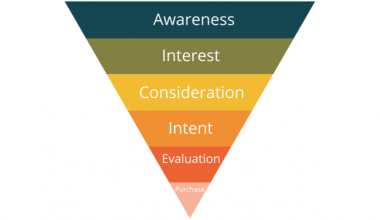Developing a strong internal brand is critical for any organization seeking to promote a united culture and ensure employees’ alignment with the company’s goals and values. When I began developing our internal branding strategy, I recognized how important it was to engage our staff and instill a sense of ownership and pride. This not only reinforced our brand but also increased employee morale and productivity. In this article, I’ll discuss critical processes and considerations for creating a strong internal branding strategy.
What is Internal Branding?
Internal branding is the process of matching your company’s culture, values, and mission with the daily experiences and perceptions of your employees. It is critical because employees who understand and represent the brand can provide more consistent and authentic experiences for customers. According to Gallup, organizations with highly engaged employees had 147% higher earnings per share than their competitors.
Basic Elements of Internal Branding
Internal branding consists of the following:
#1. Brand Vision and Values
These are the guiding ideas and goals that justify the company’s existence. They are not simply written assertions, but actual experiences within the firm.
#2. Employee Engagement
Employee engagement refers to internal marketing methods that connect employees to the brand, including communication channels and participation in brand decisions.
#3. Brand Education
This component entails training and developing people to grasp the brand’s essence and how their role fits into it.
#4. Brand Expression
This is how the brand is visually and behaviorally manifested within the organization, including office design, staff behavior, and internal communications.
#5. Brand Champions
Individuals within the organization who represent the brand to the point where they have a positive influence on their colleagues.
#6. Feedback Mechanisms
Systems are in place to assess employees’ brand perceptions and the efficacy of internal branding efforts, allowing for iterative improvement.
What Happens If You Don’t Have Great Internal Branding?
The implications of poor or nonexistent internal branding are numerous and diverse, but some of the most typical issues include:
- Misaligned employees working against your company’s goals
- Low staff morale and disengaged workers
- Negative word-of-mouth criticism about your company
- Staff that are unsure about the benefits of your brand or business and hence cannot market it.
- Lackluster work and external advancement because personnel do not comprehend or believe in what they are doing.
- High employee turnover due to widespread job unhappiness.
Key Steps to Create an Effective Internal Branding Strategy
Building a great internal brand begins with a systematic approach that engages employees and connects them to the company’s mission and values. Here are the key elements for creating a strong internal branding strategy, complete with personal experiences and practical ideas.
Step #1: Define your brand’s values and mission
Begin by clearly outlining your brand’s values and objectives. These should be more than simply words on a page; they should connect with your employees and influence their behavior and decisions. At our company, we held workshops with team members from all departments to ensure that our values matched the diversity of our organization. This collaborative approach fostered employee ownership and dedication.
Step #2: Communicate Consistently
Consistent communication is essential for reinforcing your brand values. Keep your employees informed and involved through a variety of channels, including newsletters, meetings, and internal social media. We designed a monthly newsletter that showcased how different teams incorporated our brand principles into their initiatives. This not only kept everyone informed, but it also encouraged staff by demonstrating actual examples of our ideals in action.
Step #3: Improve Employee Engagement
Engaged employees are more likely to become brand ambassadors. Create ways for employees to contribute to the brand narrative, such as suggestion boxes, employee blogs, or video testimonials. In our situation, we established an internal blog where employees could contribute their tales and experiences, creating a sense of community and belonging. This platform became a place where employees felt respected and heard, which strengthened their commitment to the company.
Step #4: Implement Training and Development
Investing in employee training and development ensures that everyone understands the brand and can effectively represent it. We held brand training workshops that focused on our mission, values, and the necessity of brand consistency in customer interactions. These seminars were participatory, including role-playing situations to help employees comprehend the brand message and implement it in their daily jobs.
Step 5: Recognize and reward
Recognition and prizes can encourage employees to live up to the brand’s ideals. Create a recognition program to recognize employees that exemplify the brand. We implemented a “Brand Champion” award, which is given quarterly to employees that go above and beyond to promote our brand. This approach not only inspired employees but also emphasized internal role models, reinforcing positive behavior and attitudes.
Step #6: Gather and Act on Feedback
Gather employee input regularly to better understand their thoughts and experiences with the brand. Collect insights through surveys, focus groups, and one-on-one conversations. Responding to this feedback communicates that you respect their advice and are committed to continual improvement. We discovered that anonymous surveys were very helpful at gathering honest comments. Based on the information gathered, we made changes to our internal branding campaigns to keep them relevant and effective.
By following these steps, you can create a strong internal branding strategy that links your employees with your company’s vision and values, resulting in a more united and engaged staff.
Overcoming Challenges in Internal Branding
Challenge #1: Resistance to Change
Resistance to change is a common issue in internal branding. To address this, involve employees early in the process and clearly describe the benefits of the new branding strategy. Transparency and open conversation are crucial.
Challenge #2: Maintaining Consistency
Maintaining consistency can be tough, particularly in huge businesses. Establish clear guidelines and provide regular training to ensure that everyone is on the same page. Conduct internal audits to ensure that brand requirements are met.
Challenge #3: Measuring Impact
It might be difficult to assess the effectiveness of internal branding initiatives. Use a blend of quantitative and qualitative indicators, such as employee engagement, retention, and survey feedback. Tracking these indicators over time will allow you to evaluate the success of your strategy.
Real-World Examples of Effective Internal Branding
Example 1: Zappos
Zappos is noted for its strong internal brand and corporate culture. They prioritize staff happiness and empowerment, which leads to exceptional client service. Zappos provides rigorous training programs and encourages employees to express their personalities, ensuring that the brand’s ideals are lived every day.
Example 2: Google
Google’s internal branding emphasizes innovation and teamwork. Open office spaces, opportunities for professional development, and a focus on work-life balance make employees feel valued and driven to contribute to the company’s growth.
Here’s a template to help you create your internal branding strategy:
Internal Branding Strategy Template
The Role of Leadership in Internal Branding
Internal branding depends heavily on leadership. Nonetheless, they are sometimes the most overlooked component of a successful internal branding strategy. Keep in mind the following crucial leadership roles:
#1. Vision Casting
Leaders must communicate a clear and compelling brand vision that motivates people to embrace and promote the company’s values.
#2. Leading by example
The behavior of leaders establishes the standard for internal branding. They must continuously reflect the brand’s values in their behaviors and decisions.
#3. Resource Allocation
Leaders must ensure that enough resources (time, budget, and personnel) are available to establish and maintain effective internal branding strategies. Keep them updated on internal communications calendars so they know what’s coming up and what additional resources may be required.
#4. Recognition & Rewards
Leadership should identify and promote people who effectively represent the brand, supporting the ideal brand culture.
#5. Open Communication
An open-door approach that encourages and acts on input is critical for creating a true internal branding culture.
How to Use Technology in Internal Branding
Technology can be a secret weapon in internal branding. Here’s how technology can be used effectively:
#1. Intranets
Building corporate intranets gives you access to a variety of interactive technologies for establishing a two-way discussion. Features such as social feeds, community spaces, and blogs encourage employees to interact with and contribute to the brand’s story.
If you want to boost internal communication through your intranet, you might hold live Q&A sessions with leadership where employees may inquire about anything—the newest project, new brand efforts, you name it. Or hold regular ‘Brand Story’ contests on your social media channels, with the best employee stories winning and being published on the homepage.
Community spaces may also be goldmines, especially if you incorporate a monthly ‘Think Tank’ challenge in which departments deliberate on a theme and contribute inventive solutions.
#2. Personalised User Experiences
Employees feel more in control of their brand interactions when they have access to personalization technology.
Imagine entering onto a platform that greets you by name, provides a feed of news and updates personalized to your hobbies and role, and even includes a learning dashboard that recommends courses based on your career path and brand values. This is more than simply a pleasant touch; it demonstrates that the brand values each person as an individual. When people feel visible, their relationship to the brand grows stronger.
#3. Analytics and Insight
Implementing tools with comprehensive analytics capabilities allows you to track engagement, sentiment, and the reach of internal branding activities.
Are your brand’s valuable webinars a hit? Great, do more of them. Is the new marketing campaign not receiving the momentum you expected in some departments? It’s time to question why. This information is crucial for developing plans and determining success.
Furthermore, it is evidence-based, allowing you to make decisions and changes based on actual, observable employee interactions.
#4. Mobile Accessibility
With smartphones becoming ubiquitous, having a mobile-responsive platform means that internal branding efforts reach employees at any time and from any location, keeping them linked to the brand both inside and outside of the workplace. Better yet, having a mobile communications app boosts engagement to new heights.
Imagine your team catching up on the latest corporate news, engaging with brand stories, or even taking part in brand challenges from their phones, whether they’re on a coffee break, commuting, or working remotely.
It is about ensuring that your brand’s pulse is always at their fingertips, keeping the relationship alive and energetic no matter where they are.
#5. Integrated Tools for Reward and Recognition
With employee engagement platforms that incorporate built-in reward and recognition tools, you can turn brand-aligned behaviors into quick, public celebrations.
Imagine a digital “wall of fame” that updates in real-time, highlighting individuals or teams who have gone above and beyond. Consider receiving a company-wide alert thanking a department for a project that precisely captured the brand’s identity.
It is about creating moments of pride that not only highlight individuals but also establish a standard for brand behavior across the organization.
#6. E-Learning and Development Tools
Use e-learning tools to educate staff about the brand’s values.
E-learning solutions may transform the abstract concept of brand values into concrete learning experiences.
What if employees could take a course on your brand’s history and mission at a time that suits them? Or what if there were interactive simulations in which employees had to make judgments based on brand values?
It’s about going beyond the manual and creating an immersive, enjoyable learning experience for the brand. This enhances comprehension and builds a genuine connection to the brand’s values, enabling employees to not only know but also live the brand in their roles.
Key takeaways
- Engaged employees are critical to a true brand portrayal.
- Regular updates and open interactions promote the brand principles.
- Employees receive ongoing training to ensure they understand and embrace the brand.
- Recognizing and rewarding employees builds a strong brand culture.
- Getting regular feedback allows you to modify and improve your branding strategy.
Conclusion
Creating a successful internal branding strategy is critical for connecting your employees to your company’s values and mission. By engaging your staff, communicating consistently, and rewarding their accomplishments, you can build a strong internal brand that will translate into a strong external brand presence. How are you going to start developing your internal branding strategy today?
Related Articles
- Top Rebranding Strategies That Sparks Massive Business Growth
- 15 Famous Brand Positioning Examples to Inspire Your Brand Strategy (+ Branding Tips)
- Branding Sentiment Analysis: Everything You Should Know
- Employee Branding in 2024: Top 9 Trends No Company Can Ignore (According to Experts)
- How to Write a Rebranding Press Release With Examples & Templates






